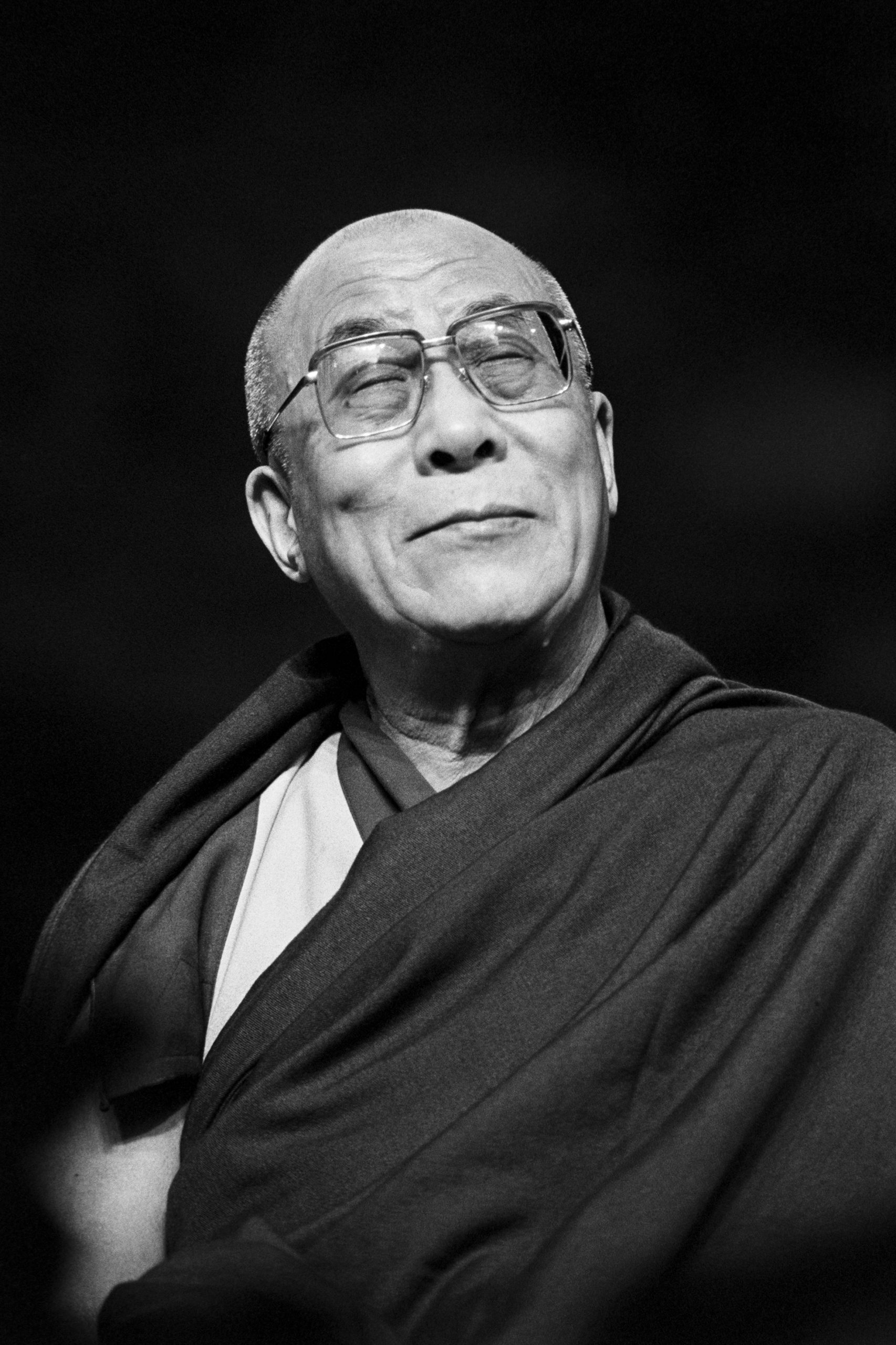Kundalini Mudras: 8 Hand Mudras That Helps in Kundalini Awakening
Mudras in Kundalini yoga are intricate hand gestures that serve as powerful conduits for directing pranic energy within the body. These sacred gestures go beyond mere physical postures, delving into the realm of spiritual practice. In Kundalini yoga, mudras...


Mudras in Kundalini yoga are intricate hand gestures that serve as powerful conduits for directing pranic energy within the body. These sacred gestures go beyond mere physical postures, delving into the realm of spiritual practice.
In Kundalini yoga, mudras play a pivotal role in connecting with the vital life force, often referred to as Kundalini Shakti.
Mudra hand gestures are not merely symbolic but are associated with different energies present in the body. By engaging with specific mudras in a deliberate manner, such as through chanting, focused breathing, or meditation, practitioners can stimulate the dormant Kundalini energy residing at the base of the spine, within the root chakra. Kundalini is found here in the form of a serpent.
In this article, we aim to explore the Kundalini mudras and their significance in awakening the dormant energy within. We will delve into the intricacies of hand mudras, each with its unique attributes, and understand how they can be harnessed to facilitate the journey of Kundalini awakening.
What are mudras and how do they affect the body?
Mudras are symbolic hand gestures or positions that hold deep significance in various spiritual and cultural practices. Each mudra carries unique symbolism and is believed to influence the flow of prana (life force) within the body, fostering physical, mental, and spiritual benefits.
Mudras exert a profound influence on various aspects of the human body, including pranas (vital life forces), chakras (energy centers), doshas (bio-energetic principles), and more. These intricate hand gestures are not merely symbolic; they are dynamic tools that engage specific reflex zones on the hands. Through these reflex zones, mudras have the remarkable ability to correspond with different body parts, organs, and systems.
By practicing mudras with intention and focus, individuals can stimulate these reflex zones, promoting balance and harmony within the body. This stimulation can influence the flow of pranas and the activation of chakras, contributing to overall well-being and spiritual growth. Understanding the intricacies of these connections is essential for unlocking the full potential of mudra practice.
The Link Between Mudras and Kundalini
Kundalini, often referred to as Kundalini Shakti, is the dormant spiritual energy located at the base of the spine. When awakened, Kundalini ascends through the subtle energy channels, known as nadis, ultimately reaching the crown chakra. This awakening is associated with heightened states of consciousness, spiritual enlightenment, and transformative experiences.
Mudras in kundalini yoga are incorporated with certain kundalini kriyas which are in itself are sequences of postures, breathwork, and sound that are practiced with the intention of awakening and channeling the Kundalini energy.
The practice of mudras, when approached with intention and focus, becomes a key facilitator in the journey of Kundalini awakening. As practitioners engage with specific hand gestures, they channel energy and intention toward stimulating the Kundalini Shakti.
The synergy between mudras and Kundalini lies in the deliberate activation of energy points (Chakras) that align with the subtle pathways of the body. Through mudra practice, individuals can harness and guide the flow of Kundalini energy, leading to enhanced spiritual growth, mental clarity, and physical vitality.
How Mudras are Practiced in Kundalini Yoga?
 Image Source: Shutterstock
Image Source: ShutterstockMudras in Kundalini yoga are practiced with intention, mindfulness, and a deep connection to the flow of energy within the body. The process involves a harmonious blend of physical postures, breath control, and focused awareness.
Here’s a breakdown of how mudras are effectively practiced in Kundalini yoga:
Posture and Alignment: Begin by assuming a comfortable and stable posture, typically in a seated position with an erect spine. Ensure that your hands are placed on your knees or in a specific mudra position, based on the intended practice. Breath Awareness: Focus on your breath, bringing attention to each inhale and exhale. Sync your breath with the mudra, allowing the gesture to guide the flow of pranic energy within. Intention Setting: Before initiating the mudra, set a clear intention or affirmation for your practice. The intention adds a layer of mindfulness, aligning your energy with the purpose of the mudra. Mudra Activation: Precisely form the mudra according to the specific gesture associated with the practice. Engage the fingers and hands with a sense of purpose, knowing that each movement stimulates energy channels. Focus and Visualization: Direct your gaze or close your eyes, turning your attention inward. Visualize the energy flowing through the pathways connected to the mudra, enhancing its effectiveness. Chanting (if applicable): In some practices, chanting specific mantras or sounds may accompany the mudra. The vibration of the sounds further amplifies the impact of the mudra on the energetic body. Duration and Repetition: Practice the mudra for a specific duration, allowing the energy to circulate and resonate. Some mudras may involve repetitions or variations to deepen the experience. Integration with Asanas and Meditation: Incorporate mudras seamlessly into your Kundalini yoga routine, complementing traditional asanas and meditation. The holistic integration enhances the overall spiritual practice, fostering a sense of unity and balance.Remember, the key to effective mudra practice lies in the synergy of physical alignment, breath awareness, intention, and focused energy. Consistent and mindful engagement with mudras in Kundalini yoga can lead to profound shifts in energy, promoting spiritual awakening and holistic well-being.
Mudras for Kundalini Awakening
The following traditional hand gestures serve as quick-start mudras in Kundalini yoga, offering a pathway to Kundalini awakening through regular practice, intention, focus, and breathwork. Engage with them mindfully, allowing their energy to flow through your practice.
Some common mudras we generally use in kundalini yoga are Dhyan, Kali, Shuni, Surya, Buddhi mudra. Dhyan Mudra enhances concentration, Shuni Mudra promotes patience, Surya Mudra increases vitality, and Buddhi Mudra amplifies communication. Further Pranam Mudra for divine connection, Ksepana Mudra for energy release, Venus Lock Mudra for chakra activation, and Bear Grip Mudra for strength.
Try each of these Kundalini mudras with the guidance below.
1. Dhyan Mudra
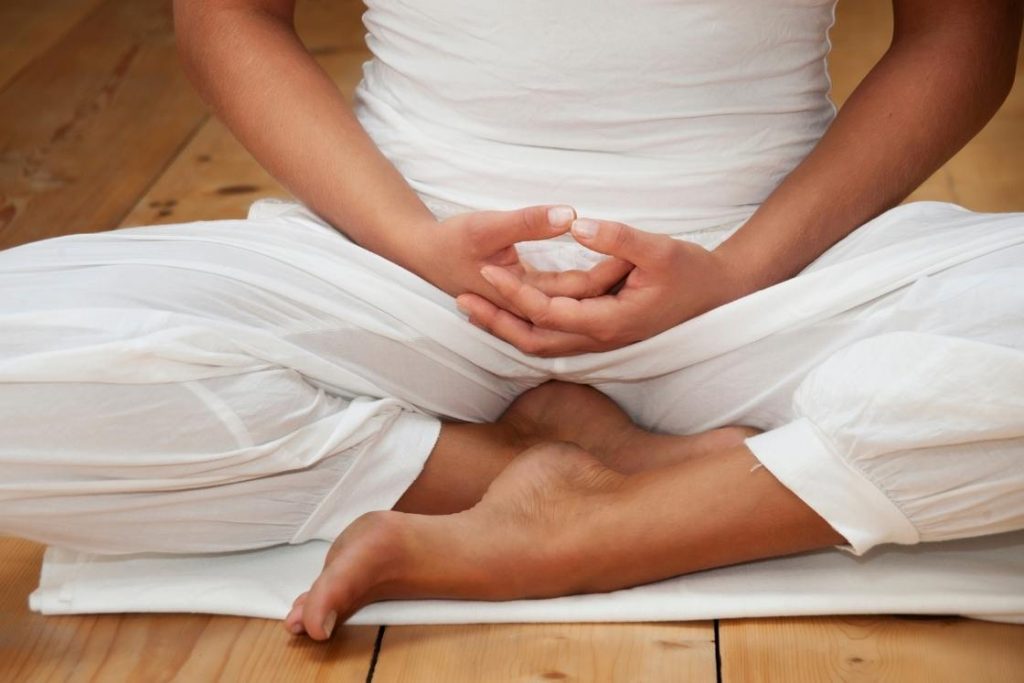
Instructions: Sit comfortably with your spine erect. Place your hands on your lap, upturned, and rest the left hand below. Place the right hand on top of the left, fingers aligned over each other, palms facing upward. Join the tip of the thumb of the right hand to the tip of the left thumb.
Dhyan Mudra is a meditative kundalini mudra that facilitates a deep state of concentration and inner contemplation. The right hand, representing the active and dynamic masculine energy, rests atop the left hand, symbolizing the receptive and intuitive feminine energy.
This mudra aids in channeling energy upward, creating a sense of balance and harmony between the masculine and feminine aspects within. The joined thumbs signify the unity of individual consciousness with universal consciousness, fostering a connection to higher spiritual realms.
By practicing Dhyan Mudra, you invite a serene and focused state of meditation, allowing the mind to settle and the energy to flow harmoniously.
2. Shuni Mudra
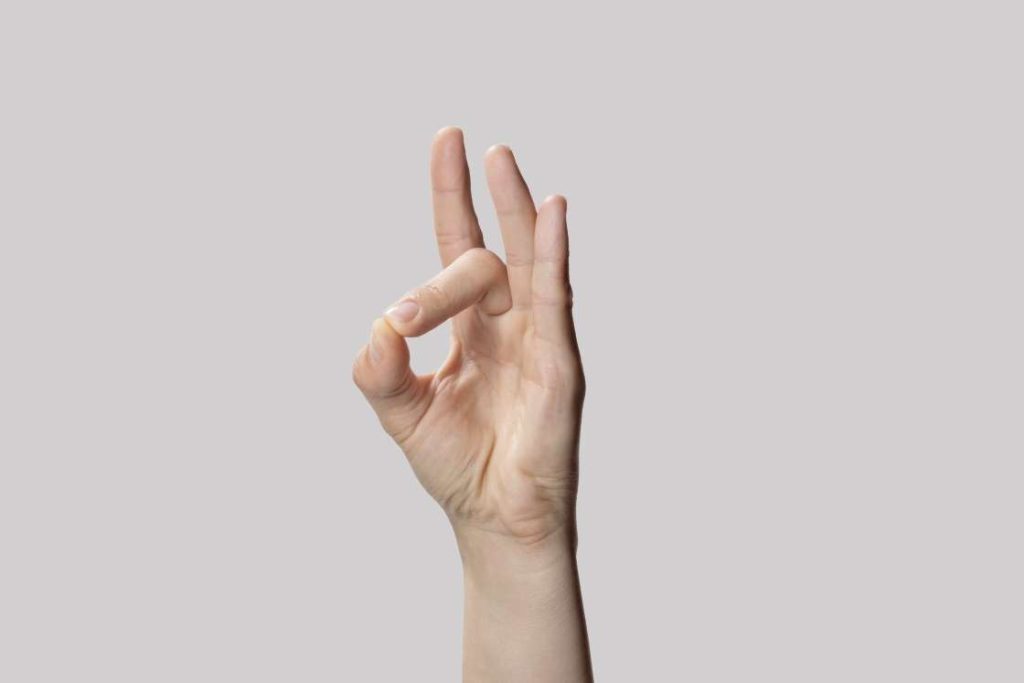
Instructions: Find a comfortable seated position, keeping your spine straight. Place your hands on your knees, palms facing up. Join the tip of the thumb to the tip of the middle finger, extending the other fingers.
Shuni Mudra, known as the kundalini mudra of understanding and patience, holds a deep connection to the planet Saturn. The middle finger, associated with Saturn, brings qualities of patience and responsibility to your practice.
As you engage in Shuni Mudra, you encourage a shift in perspective from negative to positive, fostering compassion and understanding. The involvement of the thumb connects you to the fire element and activates the solar plexus chakra, enhancing your determination and perseverance.
This mudra serves as a powerful tool for discipline and accountability in your Kundalini yoga practice. Embrace Shuni Mudra to tap into the transformative energy of patience and understanding, allowing it to guide you on your spiritual journey with steadfast resolve.
3. Kali Mudra
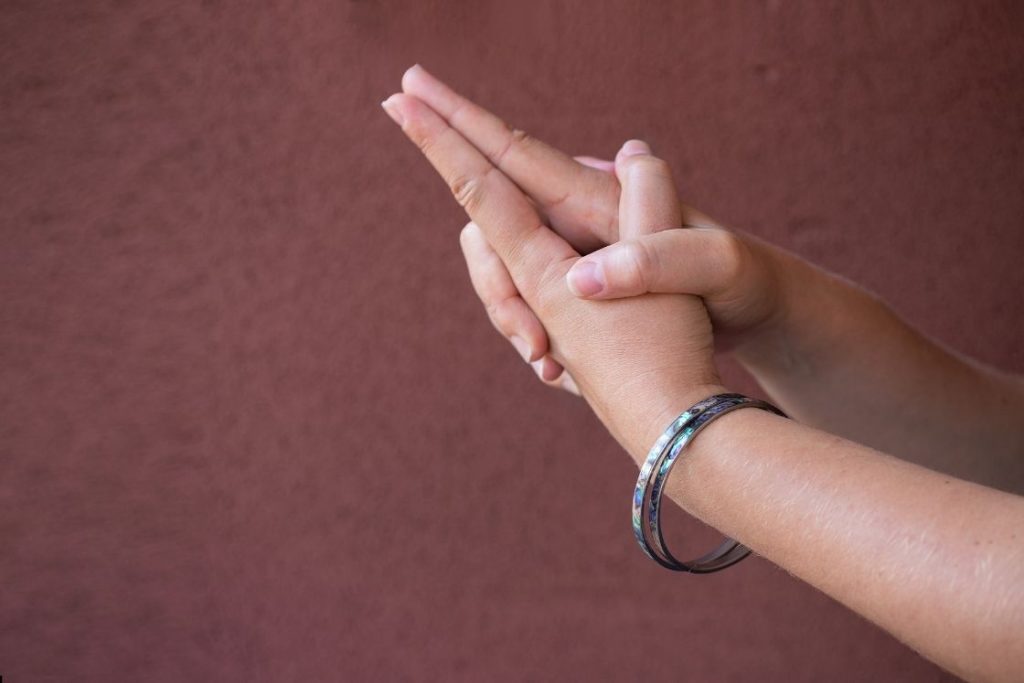
Instructions: Begin by sitting comfortably in a relaxed posture, ensuring your spine is erect. Bring your hands to your heart center, bending your elbows. Press your index fingers flat against each other and interlace the remaining fingers. Cross your thumbs, creating a compact hand gesture.
Kali mudra, aka Ksepana Mudra in kundalini yoga is a hand gesture associated with letting go and releasing, involves specific hand movements. By joining the index fingers and crossing the thumbs, you create a mudra that signifies the process of shedding, making it a potent tool for cultivating a sense of surrender and release.
The practice of Ksepana Mudra is centered around the idea of relinquishing burdens, negativity, and emotional baggage. It is believed to help focus the mind and promote concentration during meditation. As you engage in this mudra, allow yourself to surrender to the present moment, releasing any attachments or tensions.
4. Surya Mudra
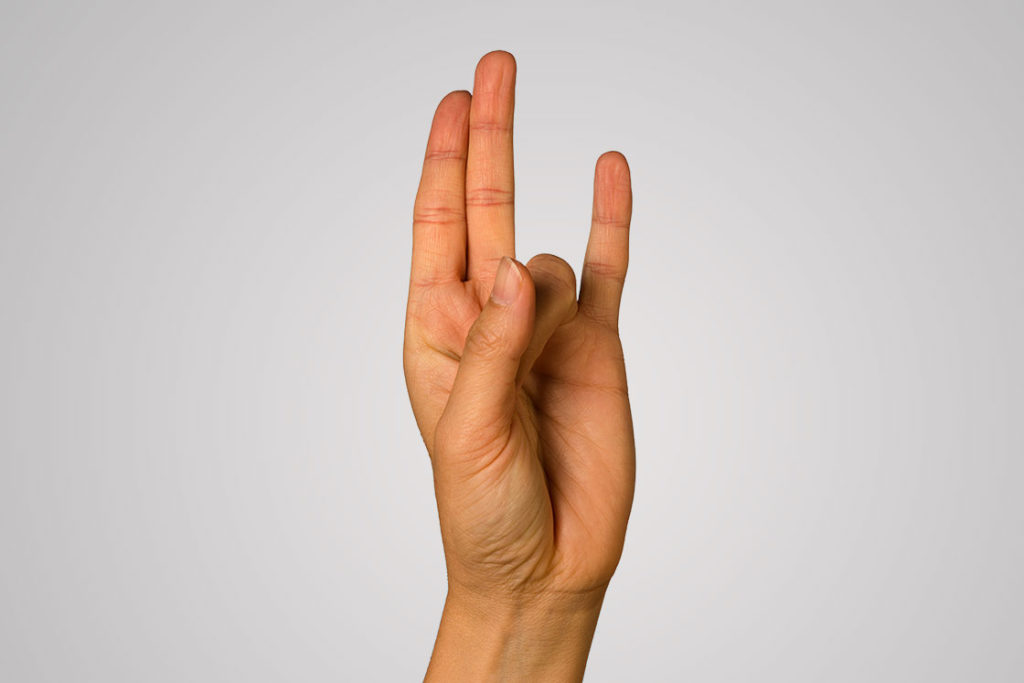
Instructions: Sit comfortably, ensuring your spine is straight. Rest your hands on your knees with the palms facing upward. Bend the ring finger so it touches the root of thumb and press thumb over bend ring finger, extending the other fingers.
Surya Mudra, the kundalini mudra associated with vitality, is linked to the energy of the Sun. By connecting the thumb with the ring finger, you engage with the solar energy, symbolizing warmth, power, and illumination.
Engaging in regular practice of Surya Mudra may amplify your vitality and balance the elements within your body. This mudra stimulates the fire element, promoting a sense of warmth and invigoration. The ring finger, associated with the Sun, encourages an alignment with the solar plexus chakra, fostering a harmonious balance of energy.
5. Venus Lock Mudra

Instructions: Sit comfortably with an upright spine. Interlace the fingers in a way right pinky stays on the bottom (for women) while for men, left pinky stays at the bottom. Depending on pinky finger position, one of the thumbs touches the fleshy part between the other thumb and the index finger.
Venus Lock Mudra, a powerful kundalini mudra, is employed to enhance concentration and focus. The unique hand positioning, whether for men or women, involves interlocking the fingers and creating a connection between the thumbs. This interlocking fosters a sense of unity and balance between the masculine and feminine energies within.
Incorporate Venus Lock Mudra into your Kundalini yoga practice to harness its potential in boosting concentration. Embrace the balanced energy flow created by this mudra, allowing it to elevate your focus and support your mental clarity during meditation or contemplative practices.
6. Pranam Mudra
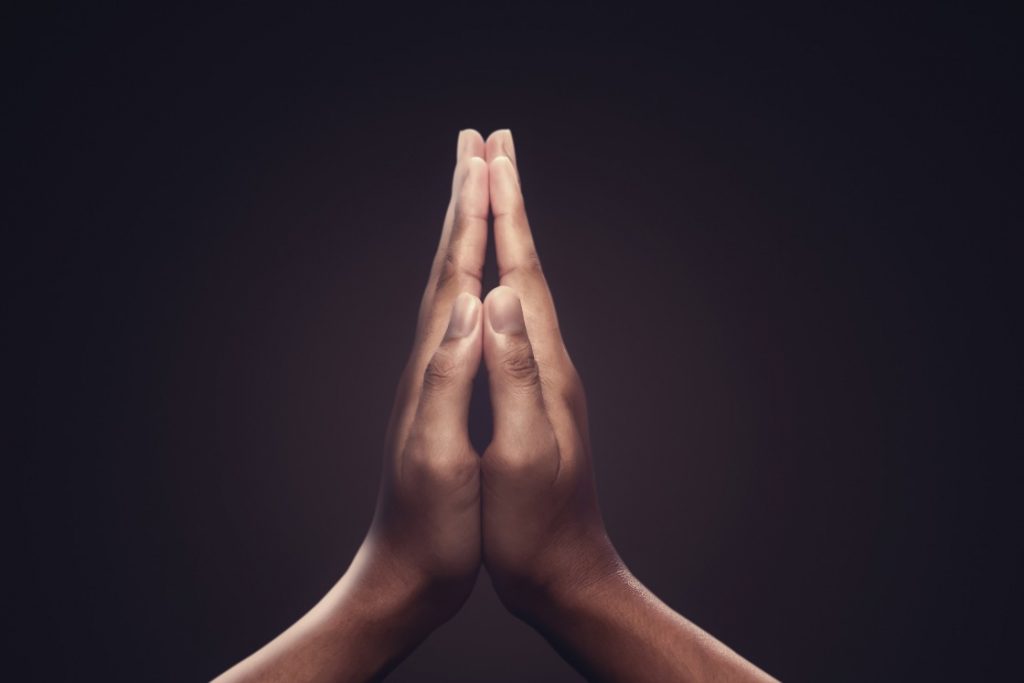 Image Source: Shutterstock
Image Source: ShutterstockInstructions: Sit comfortably with an erect spine. Bring your hands together in a prayer-like gesture at the center of your chest, fingers pointing upwards.
Pranam Mudra, a sacred kundalini mudra, symbolizes the act of paying homage and connecting with the divine. The hands pressed together in a prayer-like position at the heart center create a channel for energy to flow, uniting the left and right sides of the body.
This mudra facilitates a profound sense of centering and alignment with higher energies. The connection of the hands at the heart chakra opens the pathway to divine energy, fostering a deep sense of inner peace and spiritual connection. It serves as a reminder of the unity that exists within and beyond, encouraging a harmonious flow of energy throughout the entire being.
Incorporate Pranam Mudra into your Kundalini yoga practice to experience a heightened connection to the divine and promote inner balance. Embrace the sacred gesture of this mudra, allowing it to elevate your spiritual awareness and infuse your practice with a sense of reverence.
7. Kundalini Mudra
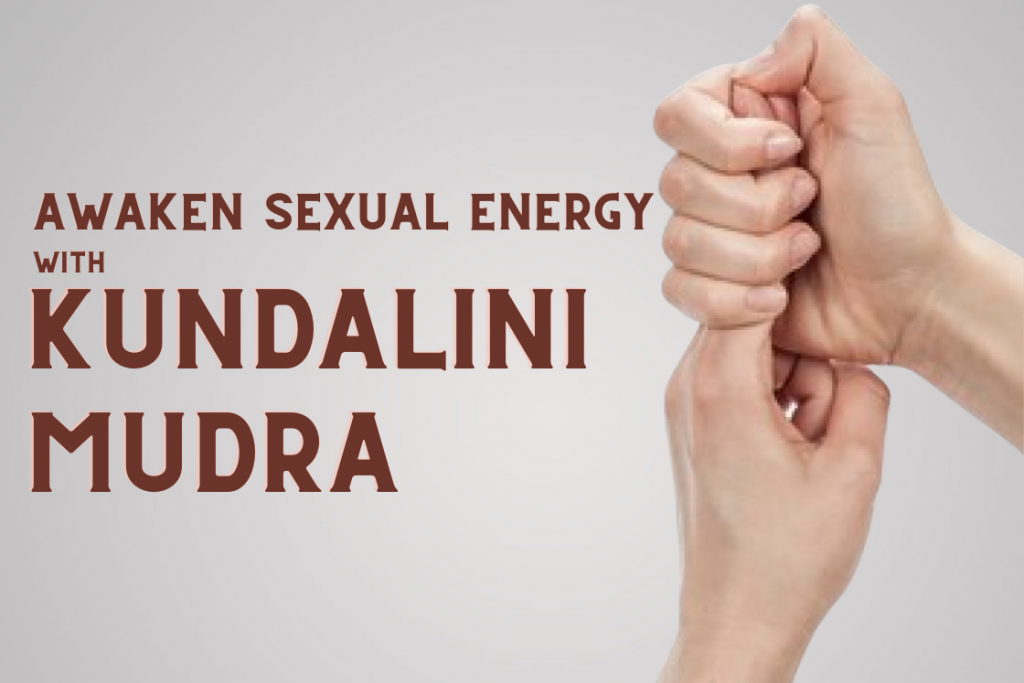
Instructions: Join fists with the right thumb on top, symbolizing the union of individual and universal consciousness. Place the left index finger through the right fist from the bottom, touching the pads of the right thumb. Curl the remaining fingers of the right hand around the left index finger.
Kundalini mudra is specifically known to activate the dormant feminine energy, represented as Kundalini. By focusing on the root chakra during meditation, this mudra initiates the awakening of the serpent energy at the spine’s base. The symbolic gesture not only unites masculine and feminine energies within but also leads to heightened awareness, pleasure, and a cosmic orgasmic experience.
This mudra by working on root chakra triggers the dormant serpent energy at the base of the spine. When kundalini starts rising up with its regular practice, you will feel extremely lively. Its awakening will trigger pleasure and power in all your chakras.
8. Maha Bheda Mudra
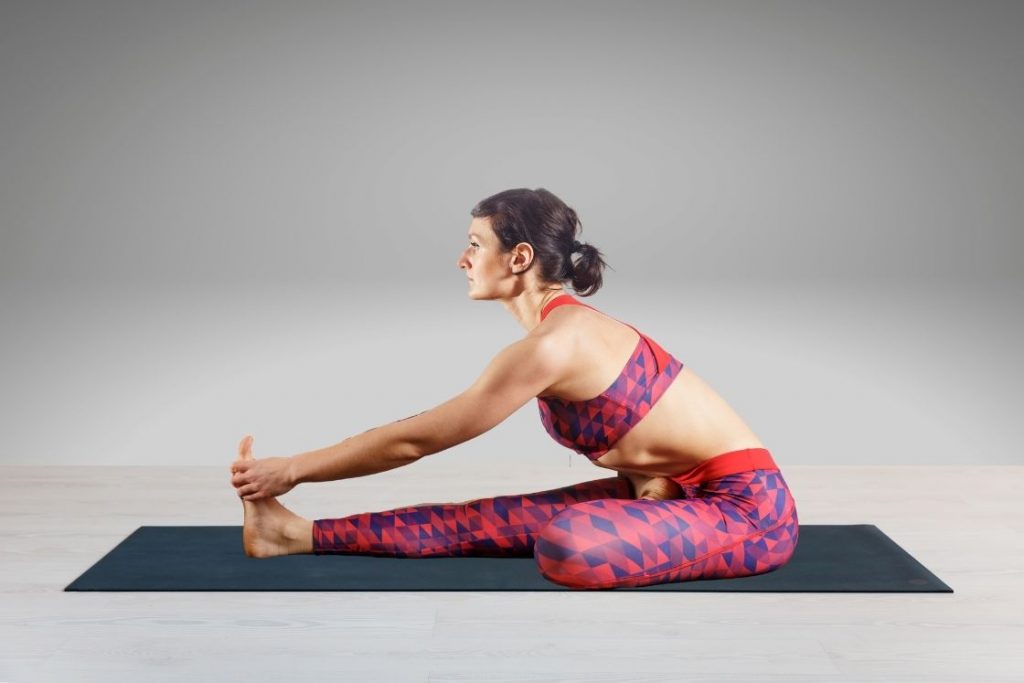 Image Source: Canva
Image Source: CanvaInstructions: Sit with your legs stretched out, fold the left leg pressing the perineum, and hold the big toe of the right leg while bending forward. Perform Maha Bandha, combining Jalandhara, Uddiyana, and Moola Bandhas, and engage in nose-tip gazing. Rotate consciousness between Mooladhara, Manipuraka, and Vishuddhi Chakra, holding the breath outside. Release the locks in reverse order and inhale slowly to release the mudra. Repeat with the right leg folded or both legs stretched out, ensuring to practice Nasikagra Dhristi. This completes one round of Maha Bheda Mudra for chakra activation, promoting a transformative inner journey.
Maha Bheda Mudra is an advanced kundalini mudra specifically designed for all chakras activation. The intricate mudra involves a series of precise movements, breathwork, and bandhas to stimulate and harmonize the energy centers from the root to the third eye chakra.
As you engage in Maha Bheda Mudra, the perineum pressure, toe holding, and breath retention create a powerful synergy. The combination of Jalandhara, Uddiyana, and Moola Bandhas intensifies the energetic flow, facilitating a transformative inner journey. The rotation of consciousness between Mooladhara, Manipuraka, and Vishuddhi Chakra enhances the connection to each chakra, promoting balance and alignment.
Incorporate Maha Bheda Mudra into your advanced Kundalini yoga practice to delve deep into chakra activation. Embrace the intricate steps of this mudra, allowing it to guide you on a profound inner journey and elevate your spiritual awareness.
Conclusion
Mudras in Kundalini yoga serve as powerful conduits for unlocking the transformative potential of Kundalini energy. These intricate hand gestures, practiced with intention and focus, play a crucial role in aligning the energetic flow, stimulating specific chakras, and fostering concentration during meditation.
Kundalini mudras, such as Gyan, Shuni, and Surya Mudra, offer practitioners a means to channel prana and facilitate a balanced energy flow within the body. As practitioners delve into the practice of these sacred gestures, they may experience heightened states of awareness and a deepened connection to the subtle energies associated with Kundalini awakening.

 UsenB
UsenB 



























